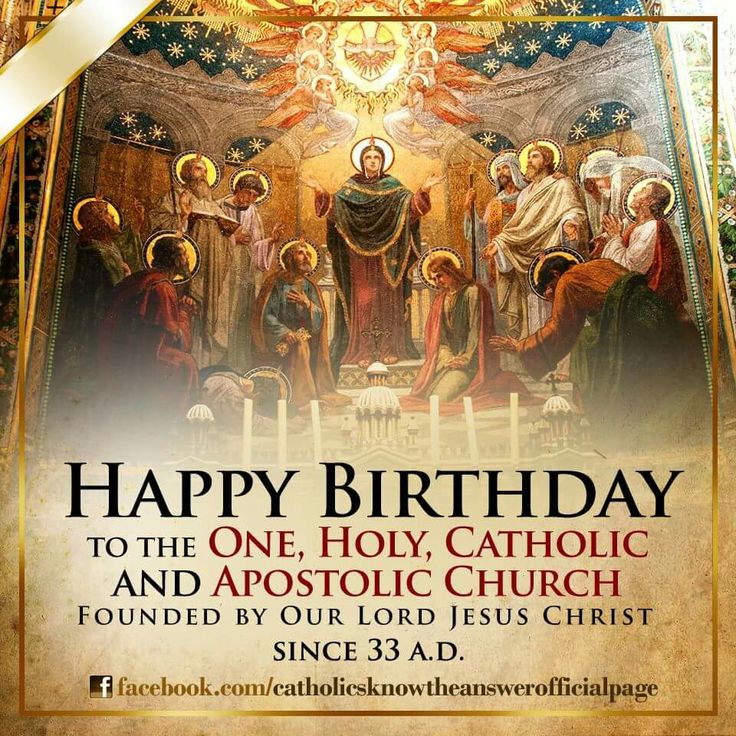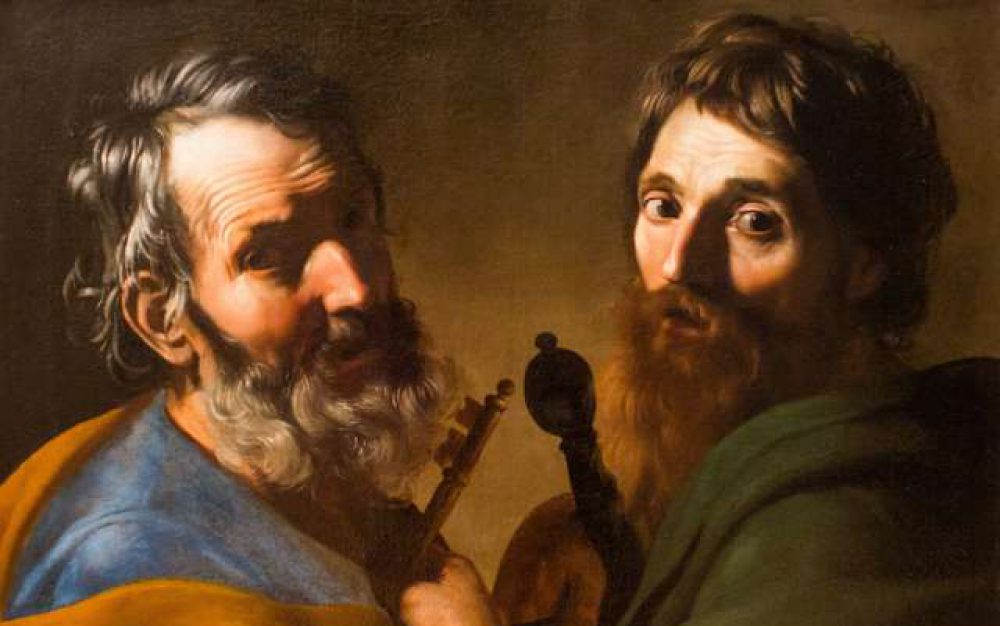Solemnity of Pentecost – 4 June 2017 – Wishing you all a Holy, Blessed and inspired Pentecost!
The Solemnity of Pentecost is the birthday of the Church:
The Church was made manifest to the world on the day of Pentecost by the outpouring of the Holy Spirit. The gift of the Spirit ushers in a new era in the “dispensation of the mystery” the age of the Church, during which Christ manifests, makes present, and communicates his work of salvation through the liturgy of His Church, “until he comes.” (CCC, #1076)
Pentecost is not just an isolated feast of the Holy Spirit but an integral feast of the Easter season. Pentecost is also an elementary feast — not as in getting to back to the basics or beginnings of the Catholic Church but can be described elementary as in the four elements of Aristotle: earth, wind, fire and water.



Red Easter: Pentecost closes the Easter season and not in an anticlimactic fashion but in a grand finale. We so often tend to look at this feast as a separate entity for the Holy Spirit but the Church integrates this feast into the Easter season as a whole. there is significance in the number of days and weeks during the Easter season and in the eyes of the Church, the 50 days are viewed as “one feast day.” The Italian name for Pentecost, Pasqua rossa (Red Easter) is a great reminder of this connection.
22. The fifty days from the Sunday of the Resurrection to Pentecost Sunday are celebrated in joy and exultation as one feast day, indeed as one “great Sunday.” These are the days above all others in which the Alleluia is sung.
23. The Sundays of this time of year are considered to be Sundays of Easter and are called, after Easter Sunday itself, the Second, Third, Fourth, Fifth, Sixth, and Seventh Sundays of Easter. This sacred period of fifty days concludes with Pentecost Sunday. (From the General Norms of the Liturgical Year and Calendar).
The Descent of the Holy Spirit at Pentecost is closely linked to the feast of the Resurrection, our Passover Feast:
On the day of Pentecost when the seven weeks of Easter had come to an end, Christ’s Passover is fulfilled in the outpouring of the Holy Spirit, manifested, given and communicated as a divine person: of his fullness, Christ, the Lord, pours out the Spirit in abundance. On that day, the Holy Trinity is fully revealed. (Catechism of the Catholic Church, #731-732)
In reading the account of Pentecost in the Acts of the Apostles, there is very pronounced imagery. It is easy to recognise the wind and fire but all four classic elements of Greek philosopher, Aristotle, are present at Pentecost, earth, wind, fire and water.
Wind
First in the account of Pentecost from Acts 2:1-11 came the wind: “And suddenly there came from the sky a noise like a strong driving wind, and it filled the entire house in which they were.”
Most Biblical renderings of the God or the Holy Spirit is through a gentle breath, such as Jesus breathing on the Apostles in the Resurrection appearance in the Upper Room. At Pentecost it is the same room, but here the Holy Spirit comes as wind of strength and power.
There is nothing subtler than the wind, which manages to penetrate everywhere, even to reach inanimate bodies and give them a life of their own. The rushing wind of the day of Pentecost expresses the new force with which divine love invades the Church and souls (p. 592, In Conversation with God, Volume 2, by Francis Fernandez).
Fire
Next came the fire: “Then there appeared to them tongues as of fire, which parted and came to rest on each one of them.” It is this combination of wind and fire that is the gift of tongues. One of the optional readings for Pentecost is the story of the Tower of Babel. Pius Parsch, as quoted on the Catholic Culture’s Pentecost page, explains that is was the sin of pride that separated and divided those at Babel. The Holy Spirit brings unity and love, which allows those languages to be spoken and understood by all.
The liturgical color for Pentecost is red, the color of fire and blood and the symbol of love. The last time we have seen red vestments outside of the feasts of martyrs or apostles is Palm Sunday and Good Friday. The red for those days recalled the blood of Christ. Today the red recalls the tongues of fire and we ask the Holy Spirit to ignite our hearts, just as we pray:
Come, Holy Spirit, fill the hearts of thy Faithful; and enkindle in them the fire of Thy love….
“In medieval times, many churches had a “Holy Ghost Hole”, a small circular opening in the ceiling of the church. The holes would be decorated on Pentecost, with various items symbolising the Holy Spirit lowered through the hole. This practice calls to mind the elements of wind and fire. Father Francis Weiser describes the tradition (emphasis mine):
In medieval times the figure of a dove was widely used to enact in a dramatic way the descent of the Holy Spirit on Pentecost Sunday. When the priest had arrived at the sequence, he sang the first words in a loud and solemn voice: Veni Sancte Spiritus (Come, Holy Ghost). Immediately there arose in the church a sound “as of a violent wind blowing” (Acts 2, 2). This noise was produced in some countries, like France, by the blowing of trumpets; in others by the choir boys, who hissed, hummed, pressed windbags, and rattled the benches. All eyes turned toward the ceiling of the church where from an opening called the “Holy Ghost Hole” there appeared a disc the size of a cart wheel, which slowly descended in horizontal position, swinging in ever-widening circles. Upon a blue background, broken by bundles of golden rays, it bore on its underside the figure of a white dove.
Meanwhile the choir sang the sequence. At its conclusion the dove came to rest, hanging suspended in the middle of the church. There followed a “rain” of flowers indicating the gifts of the Holy Spirit and of water symbolizing baptism. In some towns of central Europe people even went so far as to drop pieces of burning wick or straw from the Holy Ghost Hole, to represent the flaming tongues of Pentecost. This practice, however, was eventually stopped because it tended to put the people on fire externally, instead of internally as the Holy Spirit had done at Jerusalem. In the thirteenth century in many cathedrals of France real white pigeons were released during the singing of the sequence and new around in the church while roses were dropped from the Holy Ghost Hole (Weiser, Holyday Book).
Except for the burning bits, some of these practices have been revived in these older churches. In parts of Italy and Sicily, red rose petals are dropped through the hole. This is an especially spectacular sight in the church in Rome dedicated to St. Mary and the Martyrs that was formerly the Pantheon. There is an opening in the dome and the rose petals are dropped, filling the church and covering the floor.

Red and fire are the dominant images used in Pentecost celebrations. In many places of the Northern Hemisphere, this is height of strawberry season and the red fruits shapes like tongues of fire seem perfect for the feast day that falls in the warmer months.”
Earth
The earth element doesn’t seem to be as obvious with the connection more as it relates to God’s creation. Pentecost, which means “Fiftieth Day” in Greek, was a Jewish festival marking the 7 weeks or 50 days after the Passover. It was a harvest festival, offering the first fruits in thanksgiving to God. Later the feast also commemorated the giving of the Law or Ten Commandments to Moses at Sinai. Our civilization has become less agrarian but this “earth element” should be a universal reminder to us as respect and thanksgiving for creation. Pope Benedict explains and elaborates:
“From its earliest prehistory [Pentecost] has been a feast of harvest. In Palestine the crops were ripe in May; Pentecost was the thanksgiving for the grain harvest. Man sees the fruitfulness which results from the interplay of heaven and earth as the miracle by which he lives and he acknowledges that gratitude is the appropriate response to this miracle….Has this become meaningless today? If we think of “Holy Spirit” only in terms of Christian inwardness and of “harvest” only in terms of technology and commerce, our view of the world has become schizophrenic. At Pentecost the church prays a verse from the psalms which runs: Send forth your Spirit, O Lord, and renew the face of the earth. Initially this refers to the creative Spirit which has called the world into being and maintains it in being. It is important to have a new reality of this at Pentecost: the Holy Spirit who came down upon the apostles is the same Spirit who fashioned the world….”
Against this background we must also understand that, in Israel, Pentecost was the remembrance of the arrival at Sinai and the celebration of the Covenant which had set out a path for Israel to travel in the form of the law. Christians have always seen their Pentecost as a continuation of this idea: the New Law is love, breaking down barriers and uniting people in the New Covenant. Love, too, is not formless or arbitrary; it is a formation from within, a wakefulness of the heart which takes up the rhythm of creation and perfects it. (Seek That Which is Above, 79-81)”
Water
The final element, water, is not an image of the Holy Spirit but a direct result of the coming of the Paraclete upon the Disciples. After they were filled with the Holy Spirit, they left the Upper Room and began to proclaim the Gospel. And on hearing their words, 3000 were baptised that day. The matter of baptism is water.
From the very day of Pentecost the Church has celebrated and administered holy Baptism. Indeed St. Peter declares to the crowd astounded by his preaching: “Repent, and be baptised every one of you in the name of Jesus Christ for the forgiveness of your sins; and you shall receive the gift of the Holy Spirit.”
26. The apostles and their collaborators offer Baptism to anyone who believed in Jesus: Jews, the God-fearing, pagans. 27 Always, Baptism is seen as connected with faith: “Believe in the Lord Jesus and you will be saved, you and your household,” St. Paul declared to his jailer in Philippi. And the narrative continues, the jailer “was baptised at once, with all his family” (CCC, #1226)
With every baptism comes the reminders of the first Pentecost. Today is also a good feast to celebrate our reception of the sacraments of baptism and confirmation. ( Jennifer Gregory Miller)





